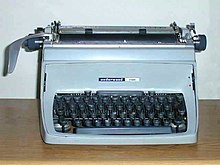
QWERTY Keyboard A Remarkable Tale of Innovation, Adoption, and Staying Power The ubiquitous QWERTY keyboard, found on virtually every computer and smartphone, has a fascinating history rooted in the ingenious design of Christopher Sholes in 1868. Sholes, an American newspaper editor and printer, created the QWERTY layout to address a specific problem typewriter jamming.
Sholes’ design was brilliant in its simplicity. By strategically placing frequently used letter pairs apart from each other, such as “t” and “h,” he reduced the likelihood of typebars (the metal arms with characters) jamming when two adjacent keys were pressed in quick succession. This ingenious solution not only prevented jams but also played a pivotal role in the keyboard’s widespread popularity.
In 1874, Sholes sold the rights to his keyboard design to the Remington Company, a major manufacturer of typewriters. This marked a turning point, as Remington’s mass production of typewriters with the QWERTY layout led to its widespread adoption. The QWERTY keyboard became a standard in offices and homes, setting the stage for its enduring legacy.
Despite its success, the QWERTY layout did face competition. In the 1930s, Dr. August Dvorak introduced an alternative keyboard layout known as the Dvorak Simplified Keyboard. The Dvorak layout aimed to improve typing speed and efficiency by placing the most commonly used letters and letter pairs on the home row, where the fingers naturally rest. While the Dvorak layout had its merits, it couldn’t displace the entrenched QWERTY keyboard from its dominant position.
The QWERTY keyboard’s lasting popularity showcases the remarkable staying power of early technological innovations. Even in the digital age, when touch screens have become the primary means of input on smartphones and tablets, the QWERTY keyboard remains the standard layout for physical keyboards on computers and smartphones. Its enduring presence is a testament to the keyboard’s familiarity and user comfort, which have transcended time and technology.
In conclusion, the QWERTY keyboard’s origins in preventing typewriter jams, its adoption by Remington, and its enduring legacy in contemporary technology underscore the lasting impact of early innovations. Its continued use in a rapidly evolving tech landscape highlights the significance of user familiarity and the enduring influence of pioneering designs on modern technology.

